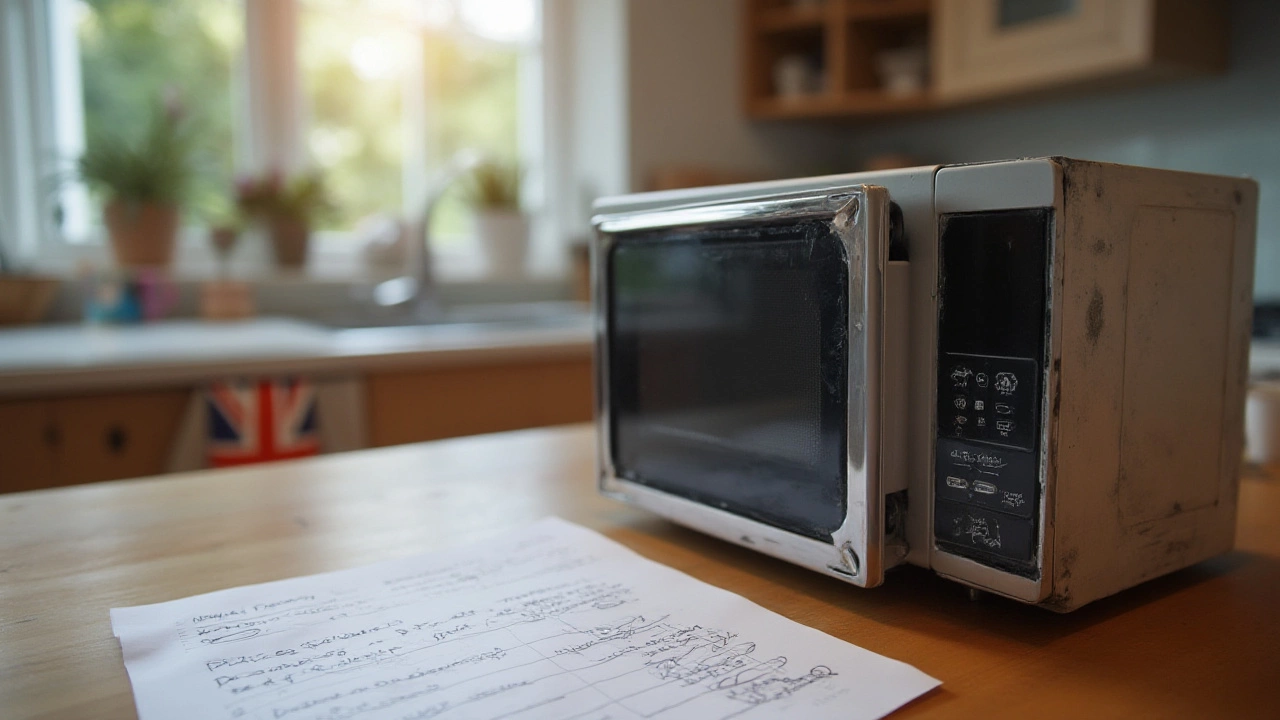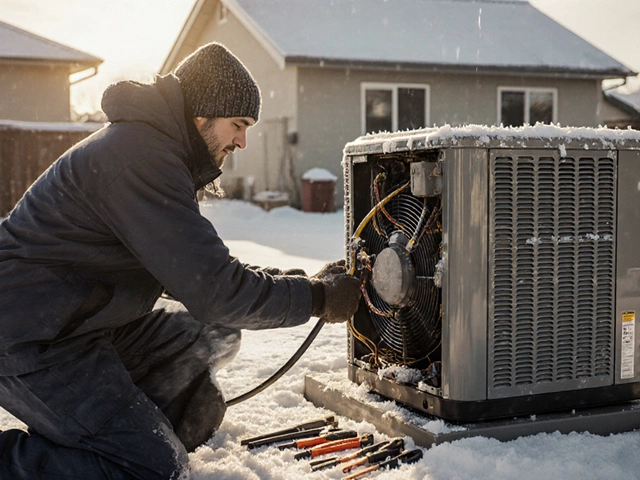Microwaves have this sneaky superpower: we use them constantly, but barely notice them until something goes wrong. Suddenly, your leftovers are still cold, popcorn bags stay limp, and that cup of coffee just refuses to heat. Nine times out of ten, it’s the magnetron—the heart of your microwave—that’s kicked the bucket. But is it really worth fixing? Wouldn’t it be easier or smarter just to toss the thing and get a new one? The answer isn’t as obvious as you’d think, and sometimes, fixing it can make sense—if you know what you’re doing. There’s more under that plastic and metal shell than most folks realize. I found myself picking apart an old microwave last year, and trust me, if you value both safety and your wallet, you’ll want the whole story before grabbing a screwdriver or calling it a lost cause.
How Does the Magnetron Work—and Why Does It Fail?
Most people have never thought about what’s humming away inside their microwave, let alone what a magnetron even does. It’s actually a bit of a marvel—the thing transforms electrical energy into high-frequency microwaves. These microwaves bounce around the cavity, making the water molecules in your food vibrate like crazy, which generates heat. Boom—hot pizza in minutes. Without a working magnetron, a microwave just sits there spinning, maybe giving off a faint hum, but nothing happens to your food. The surprising thing? Magnetrons are basically miniature power plants, and when they fail, it can be dramatic. We’re talking cold food or, sometimes, a quick pop and a flash as the component dies. It’s wild how such a small part does so much heavy lifting.
So, why do they go bad? Magnetrons don’t just die of old age, though that can do it. The average lifespan is around seven to ten years, but I’ve seen some fizzle out after just five. Power surges, slamming the microwave door hard, or running the microwave empty are classic magnetron killers. Running it empty, especially, is a microwave’s worst nightmare because all that energy gets shot right back at the magnetron with nowhere to go—like yelling in a tiny echo chamber. Bad diode, fried capacitors, or even a failed fan—those can all contribute by putting unnecessary stress on the magnetron. You might be surprised that the cost of this one part is often about half the price of a new microwave, and that’s before factoring in labor if you’re hiring a pro. Still, some high-end built-in units can run over $500 to replace, so suddenly that $80 magnetron looks tempting, if you can install it right. It’s really a gamble between saving a chunk of cash now or dealing with a total replacement down the road.
When the magnetron is on its way out, you’ll notice. Food comes out lukewarm at best, or not at all. Sometimes it makes scary noises—earsplitting buzzing, or maybe the unmistakable smell of hot electronics. If you’re the DIY type and open up your microwave (power unplugged, of course!), you’ll often see a blackened or cracked magnetron. That’s your clear sign. Remember though, the high-voltage capacitor inside can hold a lethal charge long after you unplug the appliance—messing with microwaves is no joke. Even if you replace a magnetron, if the old one died from another fault (like a faulty door switch or a bad high-voltage diode), you might be back to cold leftovers again real soon. That’s why pros always test the whole system and not just swap parts and hope for the best. There’s a reason regulations require proper certification for microwave techs in a lot of regions.

Crunching the Numbers: Cost, Replacement, and New-Buy Dilemmas
Alright, let’s talk dollars—because that’s usually what this all boils down to. Swapping a magnetron costs anywhere from $40 to $150 for the part on the typical countertop microwave. Add in a technician’s labor and a mobile service charge, and suddenly the bill can shoot up to $150–$250, easy. And if you’re the type who likes your gadgets built-in or you have a fancy convection microwave, then the bill for a new magnetron and installation could hit $400—sometimes more. Compare that to many new countertop microwaves, which you can snag for under $200 with better features and sparkling interiors, and you start to see why some people toss a dying microwave without a second thought.
But things aren’t always so cut-and-dried. Maybe you have a built-in model, like the one Laura and I installed three years ago—at the time, it was a little more than we wanted to spend, but it matched our oven and vent hood, so we justified the splurge. Built-ins and over-the-range units are notorious for both their price tags and the cost of replacement parts. Here’s the kicker: Buying and installing a brand-new built-in microwave can easily run $700–$1,000 or more once you tally up parts, labor, and potential carpentry. That’s when replacing just the magnetron starts to make a lot more sense, provided the rest of the appliance is still in great shape. If the turntable spins smoothly, the lights work, and the control pad responds like new, it might be penny-wise to spring for a new magnetron rather than dismantling half your kitchen for a brand-new unit.
Now, should you fix it yourself? If you’re not seriously comfortable with high-voltage devices, the answer is almost always no. This isn’t swapping a light bulb. That high-voltage capacitor I mentioned before? It can hold 2,000 volts or more even when unplugged—a nasty jolt that can stop your heart. If you insist on tackling it, here’s a tip: Always, always discharge the capacitor safely with an insulated screwdriver—YouTube has videos, but double-check them against manufacturer service manuals. Folks who don’t respect those voltages end up with stories they don’t want to tell twice. For many people, even if the new magnetron only buys the microwave a couple more years, it’s often worth the cost, especially for pricy, hard-to-replace models or if environmental concerns keep you from sending another appliance to the landfill.
On the flip side, if your microwave is older than your last smartphone, the interior shows rust or other physical damage, or the cost of repairs creeps closer to half the price of a replacement, it’s time to say goodbye. Replacing the magnetron won’t fix a failing door, a worn-out keypad, or a cracked turntable. Manufacturers keep making microwaves faster and smarter every year—modern sensors, inverter tech, and 10+ pre-sets make older models look ancient. The newest models often use less energy, too, so the savings can add up over time on your power bill, believe it or not. When you add up the price of safety, efficiency, and shiny new features, buying new can suddenly seem pretty appealing.
Something else nobody tells you until you’re sorting through landfill regulations: Many areas have strict rules about tossing old microwaves due to the heavy metals and electronic components. Some stores even offer free appliance recycling when you buy a new one, so factor that into your budget decisions. If you do opt for a new magnetron, keep your receipt and any warranty info in case it turns out some other part is about to die next.

Safety, Longevity, and Smart Repair Tips for Dealing with Magnetron Failure
Let’s get something out in the open: microwaves aren’t just a box that heats things—they’re high-voltage, high-frequency tools that deserve respect. There is a persistent myth floating around that you’ll get blasted with microwaves if you tinker with a broken unit. In reality, unless the shielding or door is damaged, you’re more at risk from electrical shock than radiation. Still, that’s not a joke: those electrical currents can easily be lethal. If you ever open a microwave for repair, unplug it first, and discharge the high-voltage capacitor—even days after last use. It sounds paranoid, but the stories of shock are very real.
Another thing: always buy high-quality replacement parts from reliable suppliers. Some aftermarket magnetrons look like a steal but can falter quickly or even damage your microwave’s electronics. Look for model-specific replacements; microwaves aren’t one-size-fits-all when it comes to these high-powered parts. For higher-end or built-in units, check if your appliance is still under warranty—many manufacturers offer a microwave magnetron replacement warranty of 5-10 years, even if the rest of the warranty expired. That’s essentially a free repair if you’re still covered, so always check your paperwork.
Here’s a simple, step-by-step if you’re considering calling a tech or investigating it yourself:
- Does the microwave still power on? If not, it could be a blown fuse, not the magnetron at all.
- Does the turntable spin and the fan run, but no heating? Magnetron, diode, or capacitor could be at fault.
- Do you smell burning or see scorch marks inside the microwave? Stop immediately and consult a pro.
- Check if your model is recalled—some have specific magnetron or safety issues and may be covered by the manufacturer.
- If replacing, measure the cavity and door alignment exactly; a small issue can increase risk of radiation leakage.
For those who want to make their appliance last, one of the best things you can do is just avoid running an empty microwave. It’s simple but true: always put something with some water content (even a mug of water) inside if you’re testing heating. If you hear weird noises—banging, buzzing, or clicking that wasn’t there before—stop using it. Early diagnosis can save the magnetron and make repairs cheaper. Clean the interior often, especially around vents, since food splatters can create localized heat spikes that even damage internal parts. Also, try to avoid slamming the door—it strains the safety interlocks, which can cause issues all the way back to the magnetron.
Another handy tip—those “microwave test cards” or old-school radiation leak detectors you see for sale? They’re not foolproof. If you do smell burning, or see odd flashes inside the oven, unplug the unit immediately. There are also microwave repair services that offer estimates, sometimes free if you decide on the repair, which can take a lot of stress out of the process. Your time and peace of mind are worth something, too.
The one thing people forget most: microwave repairs have a risk of compounding problems. If you change the magnetron but ignore worn wiring or a flaky control board, you might just burn out another expensive part in a few months. That’s why a good repair shop will check door switches, capacitors, and wiring, not just swap in a new component. Some magnetrons fail due to underlying issues, like improper fan cooling or bad installation from the start. That’s why, even if you get a DIY replacement right, double-check every wire and connector before buttoning it up.
So, if you’re sitting there with a cold plate of leftovers, and you suspect the magnetron is toast, think through all these angles before you buy a replacement or run to the store for a new model. If it’s a high-end, relatively young built-in, and you’re handy or know a good tech, fixing it can be a cost-effective win. If it’s a tatty countertop from the last decade, or you’re miles from a qualified repair shop, replacing the whole unit might save you money, time, and headaches. Either way, don’t let a silent microwave leave you in the dark—get a quick estimate, weigh your options, and make your call.


